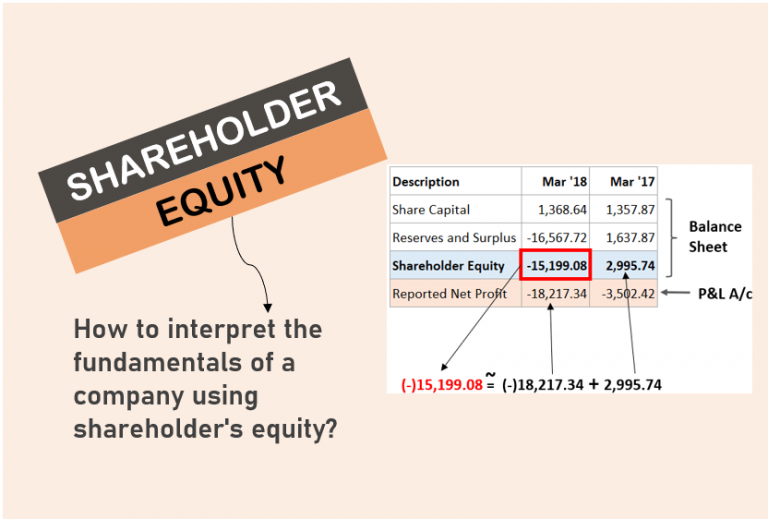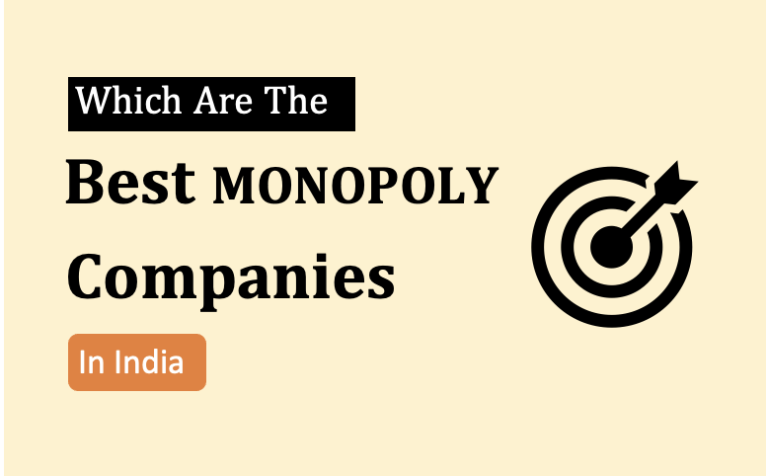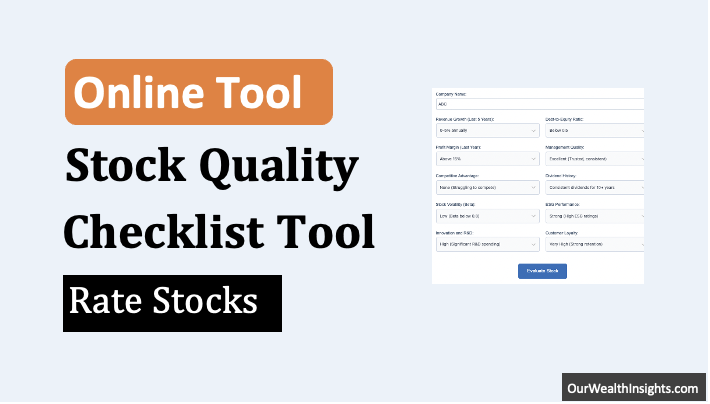When we search for high-profit shares, we are searching for stocks with the most profitable underlying business. Stocks of extremely profitable businesses bought at a fair price can yield substantial returns over the long term. Check our list of profitable businesses. In this article, I’ll also explain how my Stock Engine filters highly profitable stocks from others. [For a broader perspective, check out our guide on Top Stocks to Buy in India.]
Our search for high-profit shares can be based on the following two approaches:
- Price Appreciation: We can check the price trend. If the price growth is fast enough, the company can be assumed as profitable. For example, the market price of TCS has grown by 2.0 times in the last 5 years, hence is profitable. We are assuming that all stocks that have seen good price growth have a profitable business. But judging the profitability based only on price trends is like incomplete work.
- Underlying Business’s Profitability: This article will focus on identifying the most profitable shares based on this approach. For us, high-profit shares will be the ones representing such profitable business.
In this article, we will cover many aspects of the profitability analysis of companies. So keep reading and I’m sure you will pick something new from here.
List of High-Profit Shares
(Updated: January 03, 2025) Check The Stock Engine
| SL | Name | Industry | Price (Rs.) | Market Cap (Rs.Cr.) | Operating Margin (%) | ROCE (%) | ROA (%) | EBIT Margin | GMR Score |
|---|---|---|---|---|---|---|---|---|---|
| 1 | OBEROIRLTY:[533273] | Real Estate Development | 2,253.75 | 81,812.31 | 50.28% | 13.34% | 8.83% | 52.34% | 88.71 |
| 2 | BRITANNIA:[500825] | Bakery Product | 4,835.30 | 1,16,515.59 | 16.35% | 59.78% | 22.60% | 17.61% | 88.58 |
| 3 | MANKIND:[543904] | Branded Medicines | 2932.2 | 1,21,028.56 | 27.39% | 3.56% | 13.03% | 88.34 | |
| 4 | HAL:[541154] | Defence & Aerospace Diversified | 4205 | 2,81,226.66 | 23.00% | 19.90% | 8.97% | 26.76% | 87.23 |
| 5 | HINDUNILVR:[500696] | Household & Personal Products – Diversified | 2,405.50 | 5,64,999.51 | 21.73% | 21.74% | 15.04% | 22.62% | 87.2 |
Topics:
Point #1: Profitable Business – The Concept
What is a profitable business? The answer must be simple, right? High-profit margin companies must be the choice. However, this simplistic definition of profitability may not be accurate. In our search, we must also focus on the following:
- Industry Focus: If we focus only on high-margin companies, we’ll miss out on other good companies. Why? Because all companies do not operate at high margins. The reason for their low margins could be the inherent characteristic of the industry within which they operate. Our target is to find the most profitable share within each industry.
- Degree of Profitability: Companies that display lower margins may sometimes prove better than other high-margin companies. How? Because what matters more is the degree of profitability. For example, in an industry whose average profitability is 6%, a company operates at 15% levels. It is better than a 20% margin company, with an industry average of 18%. A high degree of profitability is symbolic of the company’s economic moat (competitiveness).

What is the logic? It takes a lot of business acumen to operate a company at an above-average profitability level. It’s a strong indicator of high-quality management. Measuring a company’s profitability is easy. We can look at their profitability ratios and decide.
But more important here is to know if the company is operating at above-average profitability levels. How to know it? By comparing the company’s ratios with that of its industry averages.
A company that displays numbers higher than its industry’s average can be called as profitable. To mark the most profitable share of an industry, we’ll look deeper. How? By analyzing their degree of profitability.
Point #2: Parameters Used To Identify Most Profitable Stocks
Suppose we are given the task of Rating Companies on a scale of 1 to 100 for its profitability. What five most important parameters we will use to do the profitability analysis?
We would use parameters that cannot be easily manipulated by companies to show themselves artificially profitable. But we will also ensure that we are using only quantitative metrics that can be calculated using data from the company’s financial reports.
We will also ensure that we use such metrics that should work for all types of companies, like for capital-intensive and non-capital-intensive companies.
Four Profitability Parameters
It’s essential to use quantitative metrics. It will help us to filter stocks using those numbers. It is also critical to rely on numbers that cannot be easily manipulated and that are applicable to various types of companies.
- Operating Margin (OPM): Operating margin measures a company’s profitability from its core operations, excluding interest and taxes. It is calculated as (Operating profit / Revenue) * 100. Operating margin is less susceptible to manipulation because it focuses solely on operational efficiency. Read: Understand operating profit.
- EBIT Margin: EBIT margin represents a company’s profitability before interest and taxes. It is calculated as (EBIT / Revenue) * 100. EBIT margin is less susceptible to manipulation because it excludes interest and tax considerations.
- Return on Assets (ROA): ROA measures a company’s ability to generate profit from its assets. It is calculated as (Net Profit / Total Assets) * 100. ROA takes into account the efficient use of assets, which is critical for both capital-intensive and non-capital-intensive companies.
- Return on Capital Employed (ROCE): ROCE is a measure of how much profit the company is making from its employed capital. It can be calculated from this formula as (EBIT / Employed Capital) * 100. Employed capital represents the total assets of the company minus its current liabilities. Know more about ROCE calculation.
These listed parameters provide a universal measure of profitability that can be applied consistently across different industries and business models, making them suitable for a broader range of companies.
Weightage Given To Each Parameter
What individual weightage (importance) we must give to these five parameters while analyzing the profitability of a company?
Please remember that our focus is on long-term investors. Yes, the weightage will change if we change our viewing lens. For example, for a trader, looking only at the net margin is enough (100% weightage).
But a person who buys stocks to hold them for periods like five to ten years will need more than one parameter. Why? Because such an investor would like to evaluate profitability from all angles.
It is also true that not all parameters are equally important, hence we must allot a weightage to them to arrive at a certain conclusion.
- OPM (35%): It reflects the company’s operational efficiency and profitability from its core business activities. For me, it is the most crucial indicator of sustainable profitability.
- EBIT Margin (15%): It represents profitability before interest and taxes, which provides insights into the profit generated by the company’s core and non-core operations. It complements the other metrics.
- ROA (25%): It evaluates the company’s efficiency in utilizing its total assets to generate profit. For long-term investors, efficient asset utilization is critical for sustained growth.
- ROCE (25%): It evaluates the company’s efficiency in utilizing its employed capital to generate profit. A company can have a large asset base, but if it employs only a part of it in business, ROCE will differ from the ROA. For long-term investors, a high return on employed capital is a critical parameter.
These weights are just a starting point and can be adjusted based on the investor’s preference.
Additionally, it’s crucial for long-term investors to consider other qualitative factors such as competitive advantage, management quality, and the company’s growth prospects. This is the reason why our Stock Engine uses a concept called the Overall Score. It is used to rate a stock based on six parameters including the profitability of its underlying business.
By assigning these weights, we create a balanced framework for evaluating a company’s profitability. The weights give appropriate consideration to the company’s operational efficiency and asset utilization.
Point #3: How To Rate Stocks For Profitability – Steps
Suppose we want to rate stocks on a scale of 1 to 100 for profitability. We’ll follow a systematic process using the four parameters we discussed earlier. Let’s use a hypothetical example of a company, “ABC Corp,” to illustrate the steps:
Step 1: Gather Financial Data
Obtain the necessary financial data from ABC Corp’s annual reports or financial statements. We’ll need the company balance sheet, profit and loss accounts, and the cash flow report. Read point #4 as well.
It is also necessary for the analyst to know how to read these financial reports. In case one does not know how to read, simply picking specific parameters from the report will work. In case you want to learn more about reading and interpreting financial reports, check this article.
Step 2: Calculate Each Profitability Metric
Calculate the values for each of the five profitability metrics:
- (a.) Operating Margin = (Total Income – Other Income – Operating Expenses) / Total Income) * 100
- (b.) EBIT Margin = (Net Profit + Interest + Tax / Total Income) * 100
- (c.) ROA = (Net Profit / Total Assets) * 100
- (d.) ROCE = [EBIT / (Total Asset – Current Liabilities)] * 100
Step 3: Normalize the Metrics
To make the metrics comparable and suitable for rating, it’s essential to normalize them to a scale of 0 to 100. This normalization is done by scaling the actual values based on their relative performance compared to their industry average.
For instance, if ABC Corp’s Operating Margin is 12% and its industry average is 10%. We can use this formula to calculate its normalized value:
Normalized Value = (Company OPM / Industry's OPM) * 100
In our example of the company ABC Corp, the normalized OPM will be 120 (= 12 / 10 * 100)
Step 4: Assign Scores Normalized Weighted Values
Now, apply the weightage we previously determined to each normalized metric:
- OPM (35% weight) * Normalized OPM value
- EBIT Margin (15% weight) * Normalized EBIT Margin value
- ROA (25% weight) * Normalized ROA value
- ROCE (25% weight) * Normalized ROA value
Step 5: Overall Profitability Scoring
In this step, our example company ABC Corp will get an overall profitability score. It is done by summing up the normalized weighted scores for each four parameters.
Overall Profitability Score = Weighted Value (OPM + EBIT Margin + ROA + ROCE)
Step 6: Assign a Rating
With the overall profitability score calculated, we are now ready to assign a rating on a scale of 0 to 100.
Why do we need scoring? Because in our stock market, there are about 5000 number stocks. If we calculate their overall profitability score, some will get a score of say 70, some with get 800, and others will get different scores.
The higher the overall number the better. But to make the score more understandable and useful for the users, we must scale them between a range of 0 to 100.
To that, we use this formula:
Scale (0 to 100) = (Stock’s Score – Minimum Normalized Score) / (Maximum Normalized Score – Minimum Normalized Score)) * 100
- Stock’s Score = Overall Profitability Score of say the ABC Corp.
- Minimum Normalized Score = Out of all stocks under analysis (say S&P BSE500 stocks), pick the minimum score.
- Maximum Normalized Score = Out of all stocks under analysis (say S&P BSE500 stocks), pick the minimum score.
This method will convert the profitability scores of all stocks within the range of 0 to 100.
Step 7: Interpret the Rating
- A score near 100 indicates very strong profitability.
- A score in the 80s suggests above-average profitability.
- A score in the 60s or 70s might indicate average profitability.
- A score below 50 could indicate below-average profitability.
Point #4: Use At least 5-Year Financial Data
To get a more reliable conclusion about the company’s fundamentals, single-year data is not enough. So, let’s assume that you have the last five years data related to the operating margin of companies. How to use this data set?
Convert the last five-year data into a single number using the weighted average value concept.
When calculating a weighted average of the last five years’ operating margin you can assign weights to each year. This will create a balanced and meaningful representation of the company’s profitability history.
The choice of weights can depend on the specific context and our preferences. Here is an example of an approach that I’ve used in my Stock Engine’s algorithm in the past.
- TTM – Trailing Twelve Months (30%): TTM data is the most recent and reflects the company’s current performance. Assigning a weight of 30% to TTM gives significant importance to the latest trends and conditions.
- Year 1 – Last Year(20%): The data from the most recent fiscal year (Year 1) is still relatively current. Assigning a weight of 20% acknowledges the importance of the immediate past.
- Year 2 (15%): The data from Year 2 is considered relevant, but it has less weight compared to more recent data to account for any changes or trends that may have occurred since then.
- Year 3 (15%): Similar to Year 2, Year 3’s data is given a 15% weight to provide a balanced historical perspective.
- Year 4 & Year 5 (10% each): The data from Years 4 & 5 receives a lower weight to reflect its diminishing importance as it moves further into the past.
This weighting scheme places more emphasis on the most recent data (TTM and Year 1) while gradually reducing the influence of older data points.
Point #5: Comparison Between WACC and ROCE To Establish Profitability
Comparing a company’s Weighted Average Cost of Capital (WACC) with its Return on Capital Employed (ROCE) is an effective method for profitability analysis.
The parameters like operating margin, gross margin, ROA, and EBIT Margin are focused on measuring profitability directly from the company’s income statement and cash flow statement. These metrics provide insights into different aspects of profitability:
On the other hand, comparing WACC with ROCE is a broader approach that considers both profitability and the cost of capital. This approach evaluates whether the company is generating returns that exceed the cost of the capital it employs. It is a crucial factor for companies to ensure shareholder value creation.
The WACC vs. ROCE/ROIC method provides a high-level assessment of whether a company is generating returns that exceed its cost of capital.
Point #6: Profitability Analysis of Service-Based Companies Using Gross Margin
You might have noted that I’ve not used Gross Margin as a parameter to do the profitability analysis.
Gross margin represents the profitability of a company’s core product or service, excluding operating expenses. It is calculated using this formula:
Gross Margin = ((Revenue – Cost of Goods Sold) / Revenue) * 100.
Gross margin is also difficult for companies to manipulate because it focuses on the cost of producing goods.
Analyzing service-based companies based on Gross Margins can be less informative compared to analyzing manufacturing or product-based companies. Gross Margin is typically more relevant for companies that have significant costs associated with the production or procurement of physical goods.
For service-based companies, the primary driver of profitability is often the efficiency of their operations, utilization of human resources, and pricing strategies. They do not have a product as such to sell. Therefore, while Gross Margin can still be calculated for service companies, it may not provide meaningful insights into their profitability or operational efficiency.
Conclusion
We have delved into the essential aspects of analyzing a company’s profitability.
Earlier emphasis was on the importance of selecting the right metrics and benchmarks for a comprehensive assessment. We’ve explored various profitability parameters, including Operating Margin, Gross Margin, EBIT Margin, ROA, and ROCE. Each of these metrics offers distinct insights into a company’s financial health.
It is also important to remember that we cannot RIL with TCS and arrive at a conclusion. The selected profitability ratios of a company must be compared with its industry average numbers. There are some industries that are inherently less profitable. An investor’s goal is to identify high-profit shares within an industry.
Have happy investing
Suggested Reading:





![Compare Indian Banks: A Quick Fundamental Analysis [2023]](https://ourwealthinsights.com/wp-content/uploads/2021/05/Compare-Indian-Banks-Image4.png)

Your orticle is highly useful for the public.You are providing very profitable information.
how have you calculated percentile scores and what it reflects to?. That is the only point out of understanding . Otherwise it was pretty simple and nice read .
It’s an algorithm based on which the stocks are scored for our Screener.
Interesting article, how have you calculated percentile scores
It is based on an algorithm
your article very helpful thank you
Hi..I read your articles..I really like your analysis. I request you to make an article about coffee can investing concept and suggest list of stocks based on this concept
Excellent idea but on which site will get readymade data or stocks.
Hi
Which one is better for investment indivisual stick or invest in nifty-50 if I invest in Ididivisual pl suggest 5 stocks.
If you are a beginner, starting with nifty will can be considered over individual stocks.
Thank you for your knowledge sharing. It’s very impressive and easy to read and understand.
Can you share the method of knowing average ROE & OPM of nifty 500 and nifty sectors as shown in the picture?
It has been obtained by calculating ROE & OPM of all constituent shares of Nifty.
Hi Mani, first of all hats off to you. I can surely co-relate with you as i have a same career path as yours with only exception you of being a financial expert.
The list shared here lists most profitable shares, but if i pick any one of these and run it through your stock analyzer that i purchased, it shows all these stocks are overvalued and scores below 85%. I didnt quite get this.
Thanks for your compliments. All profitable shares are not always trading at purchasable price.
Debt Free Stocks
Mani, very well researched, compiled work on many topics in the Financial Markets. Kudos ! With reference to your list of ‘Debt Free Stocks’ , you have listed many companies. Could you please share the parameter for sequencing these ? Secondly, it seems to be a partial list with many cash rich debt free companies missing, even though they may be having a high negative DMC figure (such as Infosys, Persistent Systems, etc) Is there some other parameter for this? Thanks
If you could sell an stock analysis worksheet for banking related stocks it will be good. Your traditional stock analysis worksheet not working for banking sector stocks..
Yes, it is not coded for banking stocks. The same has been declared in the product page. Thanks for your comment.
Sir your blog is very informative as well as a great tool for beginners to start understand what is share Market how, where and why investing in the market…. Also for experience players of market to grab the opportunity & enhance their knowledge….
Thank you for posting your feedback.
Very nice useful information
Hi
I have just started a job and recently graduated from the college, so i don’t know about where to invest, i am very much fascinated about the stock market. I want to invest for the long term but the shares you have suggested is very much costly like HEG, Bajaj finance ….. so can you please suggest stocks like mannupuram finance so that a no nothing investor can easily invest their money and good returns in future.
Hey Gaurav Goyal. I personally found PCJ, ONGC and Tata Motors doing well in the month of February to April. I have been able to make profit of more than 1.5 lacs by investing 1.2 lacs . So total of 2.7 lacs . I did short term investment. To know more you are welcome to visit
U can go for sbi card if u r keeping for long term
From where can we get average ROE and Operating Profit and Profitability figure for NSE-500 and Sectors.
Mani,
appreciate your en-devour to help educate retail investors and the analysis is a good one of past performances.
the list thrown up is heavily tilted to Housing finance /NBFC? financing sectors. we are coming out of low interest regime which favoured these sectors with high returns. Most of these shares are being dumped by big institutional investors who manage huge sums of money.
Thanks for your comments. Banks, NBFC’s etc are inherently profitable companies. No investor can afford to stay away from them for an extended period of time. On one side we hear news of “institutions” dumping such stocks. On the other hand ace investor like Jhjhunwala is buying stocks like DHFL, why? Because when a good business is available @discounted price levels, it must be grabbed.
Thanks for this wonderfull artical ….. pl keep up the good work
REGARD
Abhay Jena
FMCG giving negative returns is not a correct picture. I guess they are the once which are more profitable and are always trading at a very high P/E ratio
The overall FMCG sector is showing (-)ve values for ROE. Having said that, in the list of 50+ most profitable stocks, 5 are from FMCG Sector. This is evident from their high ROE & Op. Profit margins. But on one side this (high profitability) is an advantage, but on other side it also poses a risk (excessively high P/E ratio). More often than not such high P/E stocks leads to losses fro retail investors.
You are giving fruits to us,
We are just eating.
Hurrah…thanks..
This is the best blog and provides a worthy guidance for the individuals who wish to invest in the stock market. This blog helps to identify the profitable stocks and gives a detailed information on how to analyze the companies based on their performance so that accordingly the individuals can take investment decisions. It also tells us on what basis the profitability of the company is measured. This article has explained the concept in a very detailed manner and has done a good research analysis.
Thanks for commenting.
worthy guidance…..
EXCELLENT RESEARCH ANALYSIS
Thanks for liking the work and taking time to post your feedback. Awesome.
excellent article…very informative and conclusive…!!!
Thanks for posting your comment.
In-depth knowledge of the stock market.Very informative article.
Could you please give a detailed list of 121 sub sectors
Thanks for taking time to record your comment.
Good analysis
Thanks for posting your comment and appreciation.
Really helpful for the beginners like me.
Glad that you found the article helpful. Thanks for taking time to record your comment.
excellent information data
thanks for good information
You are most welcome. Please enjoy by reading more…
Dear Mani, I have lost 2 lakhs in the stock market recently because of day trading in equities and I entered the market without any guidance and experience. Now I have got some experience and seeking your advice regarding in which stocks should I invest so that I can get back my money at the earliest. I have 2.5 lacs to invest. Looking forward to hear from you. Regards, Rajendrakumar
Thanks for this wonderful article…pl keep up the good work
Regards
Vinod